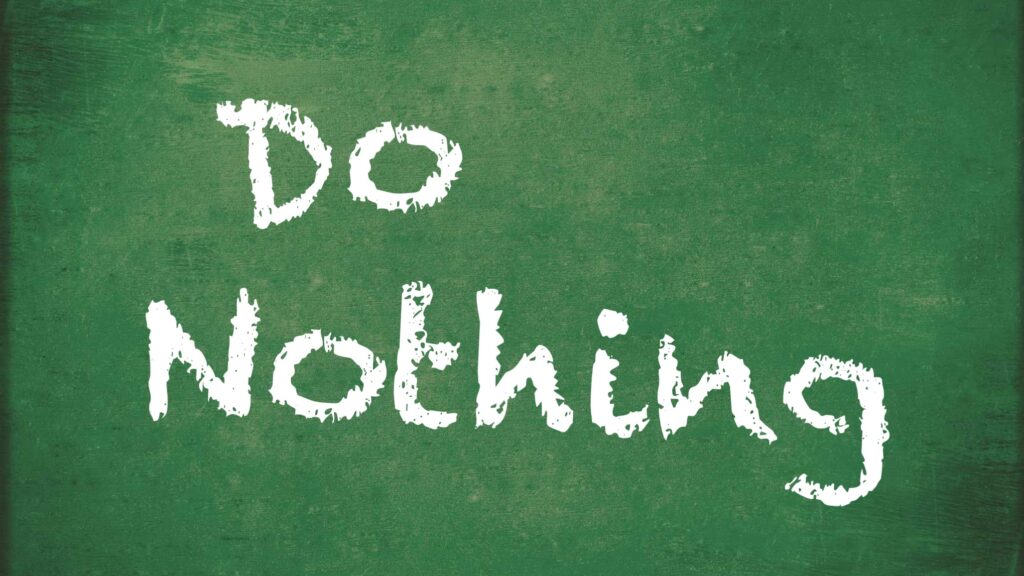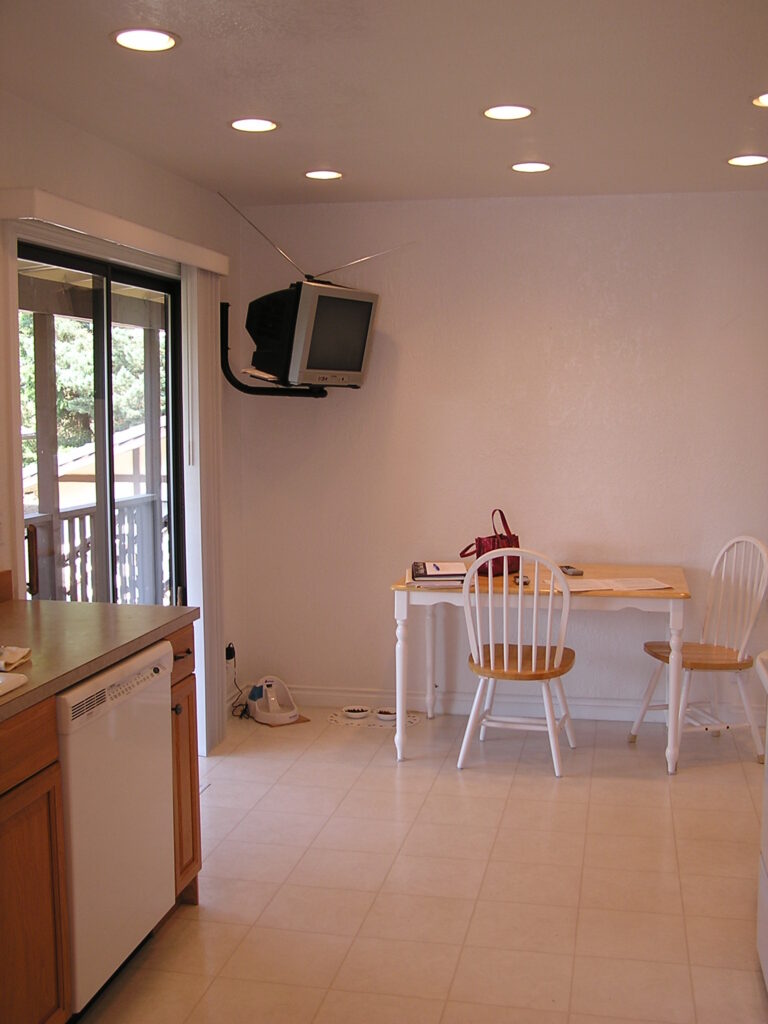The Art of Doing Nothing

It is sunny. And hot. I never knew London could be hot. I was in town teaching a course and had some time to kill before my flight home Monday morning.
“But, Erik! We HAVE to do SOMEthing!” he says sarcastically. “We can’t just DO NOTHING!”
The coffee is warm and sweet but for some unholy reason there is no cream. Apparently in the UK I’m supposed to put milk in there like SOME KIND OF DAMN SAVAGE!!!!
But I’m still grateful, however, because my friend bought it for me. He is a lecturer in the physiotherapy school at a London university and always has great insight into human thinking.
His point gets to an interesting trait of human nature. We always feel like we need to take action when confronted with something undesirable. The thought of doing nothing is unpleasant at a visceral level.
This is known as the Politician’s Syllogism which is an appeal to desperation (“Desperate times call for desperate measures”). But how does this apply?
Imperfections in the paint
Over the past 10 years, I spent my “hobby time” remodeling a rather large house. I gutted the thing down to the studs room by room and built it back up, all 3,000 square feet. One of the projects that I did was a full kitchen remodel which included building all of the cabinets by hand in my wood shop. Once they were built, I proceeded to paint them with an enamel so they would stand up to the daily wear of kitchen life.

Kitchen before I got my hands on it. Cat food is from previous owner. I hate cats.
On goes the enamel. I start to see imperfections in the coat. I can’t just let it be. I get out my brush and start trying to smooth it out which makes it worse. The more I try, the bigger the imperfection spreads. I try adding more enamel. Maybe a little paint thinner? Globs and brush-stroke are spreading everywhere. Now it just looks like someone sneezed all over my newly built cabinets.
I go back to the paint store to ask how to fix those imperfections when they appear. Their answer annoys me. “It will be fine eventually if you just leave it alone.” Apparently messing with it just makes it worse.
Leaving things alone
I head back to the shop with a new can of enamel. After stripping down that God-awful mess I had made, I apply a fresh coat. Again I see imperfections. I expect that these imperfections will create problems down the road. But this time I do nothing. I walk away dubious.
When I return four hours later…I’ll be damned. Those imperfections are really hard to find. Some leave no evidence that they were ever there at all.

Kitchen after the enamel dried
Imperfections in patients
“My knee hurts when I run. The doctor said to talk to you about it.” I hear the same patellofemoral pain (PFP) story I’ve heard 100 times before including seeing multiple PTs in the past. I know his doctor and I know why she is sending this patient to me.
I go into my song and dance about how there is nothing structurally going on in there. I continue to educate about expectation of pain and how the region is sensitized. There is some talk about how depression and stress can add to those sensations, “…like when a person has a long stressful day and their neck and shoulders are now sore and tight.”
I put them on a dynamometer and can see how they lack force production (I don’t know what “weak” means). We discuss Dye’s envelope of function model for PFP (load tolerance) and how building specific load tolerance through exercises may help from a structural and mental/emotional level. This is simply a conditioning program.
An aside: As I have stated before I believe that conditioning and education are the only real tools of the physical therapist. Of course some patients need something other than that (like surgery or a consult with a social worker) but as a physical therapist, I’m not formally trained in those interventions.
I also then admit to this patient that a gradual re-exposure to running may do the same thing and increasing running cadence may help. I point out that I can help with that if needed but it’s really not rocket science.
He smiles and nods enthusiastically and says, “That makes perfect sense.”
I know it does. I’ve been doing this for 20 years and have perfected my explanations and analogies for PFP.
And then I sit back and stress, “But keep in mind, if you can ignore this pain and keep running, then you can ignore this pain and keep running. That is no more right or wrong than any other approach that you can take to solving this. As I said before, nothing is happening to your knee. You can chose to ignore it. This is all up to you.”
“Really?” he asks. “I can just ignore this?” I nod my head and shrug my shoulders. “Sweet! Thanks!” and off he goes.
When everything works, nothing specifically works…
…but that should be comforting, not distressing. People often hear this to mean that there is nothing meaningful that they can do and therefore there is no hope. What this actually means is that you can stop worrying about your knee and get on with your life. A medical provider “doing nothing” is actually doing quite a lot.
I am a big fan of education and laying out the options that are available for the patient, giving honest descriptions and prognoses of the choices. NEVER selling a preferred approach. There may be the one approach that I can provide (typically a load tolerance progression) but it is imperative to stress that it is ultimately their choice and that there are often other options that are just as effective as the one I can provide.
Including doing nothing.
Sometimes we just need to do what the gal at the paint store did. As an expert, simply tell the person, “It will be fine eventually if you just leave it alone.” That can go a long way.
In summary…
- Coffee should have cream in it
- Complicated things like enamel actually do best when you leave them alone
- Educate patients on the available options for THEM to choose from including “Do nothing” – (GASP!)
- A medical provider “doing nothing” is actually doing quite a lot
- Sometimes it is enough to simply be an expert telling a patient, “It will be fine eventually if you just leave it alone.”
The featured image is “Do Nothing” created by me.
The image on this post of my kitchen after I finished it was taken professionally by Chadney Photography ©2016.
The other image was taken by me before I tore into it and has no copyright.
